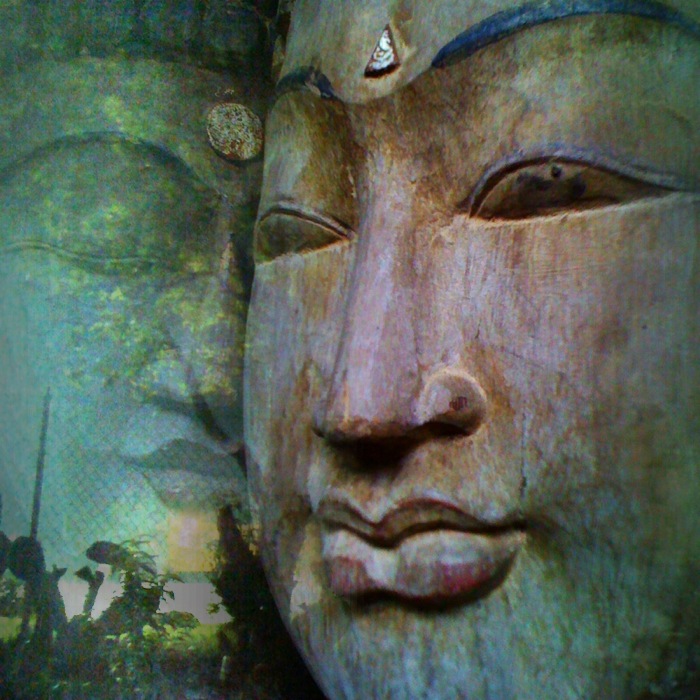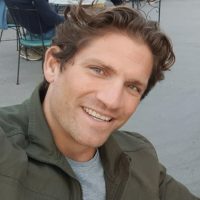One of the key tenants of Buddhism is the notion, as named within the Theravada tradition, of “not-Self.”
In short, whatever you experience in life, it’s not-Self. None of this thing we call life makes up “you.”
Fall in love and no matter how powerful the feelings appear, that is not-Self. Fall out of love and fall into a pit of despair and that’s not you either.
If you’re quick to anger at the slightest bump in the road, that is not-Self, and if generally you have happy, chilled-out thoughts, that’s also not what makes up the Self.
It’s not only emotions that aren’t Self, it’s the physical as well. If you are unable to walk and need to use a wheel chair, then that is not-Self. If you’re a calisthenics athlete, on top of your game, none of that is you. The same goes for all the physical shades of grey in-between.
When I first came across the idea of not-Self in the early part of 2017, it didn’t make much sense to me at all. Does it mean that nothing is real? Does it mean that I don’t really exist and I’m some kind of imagined reality?
It was confusing to say the least, and sounded very “woo woo,” but with time, I came to understand, through my mindfulness practice, that actually nothing is Self.
So let’s explore the idea. Take the calisthenics athlete. She’s able to jump up and go into a front lever, then into a back lever, go into a planche and do some planche push-ups before going into some muscle ups, then finally flipping herself into the air and landing perfectly on her feet. (If you have no idea what these things are, then google them—it’s amazing what some humans can do.) She has complete control over her body. Control most of us couldn’t even imagine.
To get to that level of ability, it takes hours of work each day, so it’s easy to say that she is a calisthenics athlete. It’s easy for her to think that. Using language like this, on a conventional level, makes a lot of sense, but is it right?
What happens that time she flips badly, breaks her leg, and can’t do anything for the next six weeks? She can’t do anything, so is she still an athlete? Some will say yes, of course, she is; she’ll be back at it before she knows it. Okay, but what happens if that leg break is career ending? What about then?
No matter how we perceive the physical condition of our body right now, good or bad, one thing we can be sure of is that the body will not remain that way forever. In the short-term, the health of the body may improve or get worse, but in the end, without fail, it will slowly decline. Even if our calisthenics athlete has a long, injury-free career, in the end, her body will start to age and gradually, over a period of many years, she’ll stop being able to do what she once was. It’s inevitable.
If we investigate the emotions we experience, we will find that they are no different. Think back to the last time you felt any strong emotion. Did that emotion remain the same for an extended period of time? Or did the emotion alter with time? Did it get weaker, then stronger, disappear before returning, and then did it fade away to be replaced by another emotion?
Even people in the grip of extreme grief do not feel the same level of intensity from one moment to the next. One minute they are unable to do anything but cry and the next they have stopped crying, have gotten on with feeding their kids, but still have a dull ache in their chest. As time passes, the grief may disappear for periods of time and be replaced with joy and with more time, grief slowly fades until it only visits periodically.
The same is true of positive emotions. Think back to the last time you were extremely happy. Did happiness remain the same or did it change with each moment?
When you see that feelings are not static, you start to have the ability to make choices about the emotions felt. If anger arises, you can mindlessly feed the anger or you can, mindfully, dissociate yourself from it and instead observe it and make a decision about if you need to respond and how.
In my experience, being the observer of the emotion, rather than driven by it, takes the sting out of that emotion’s tail. Often, it loses it power and the urgency to react is lost and we can make wiser choices.
When you start to see that emotions ebb and flow and are not constant, then the idea of not-Self stops being so strange. How can something that changes so often be a Self?
What happens if you don’t understand that though? If our callisthenics athlete is attached to the idea that her fitness is her Self, she’s not going to have a great time when it no longer is. Lots of professional athletes do suffer depression when their career has ended for that very reason.
What about the person who thinks that happiness defines their Self? When that happiness changes, as we know it will, then it can be an extremely difficult time to live through.
Appreciating that what happens in life is not you, and witnessing everything instead, is much easier to say than do. Following emotions without question is the default pathway for many people, so a key part to being able to see that they don’t have to make up who we are is having acceptance. Acceptance that the emotion has appeared, or that our body is not what it once was. Acceptance that life changes.
It’s easy to get annoyed with ourselves if a strong emotion such as anger appears. Damn it! I’m meant to be all chilled out and mindful! But being annoyed is just another thought that we don’t have to make our own. If we can approach the fact that anger appeared with acceptance, without trying to push the anger way, then we can find that not following that emotion and watching it instead, is much easier to do.
It takes practice, of course. It’s a lifetime of practice; we have to keep noticing to be able to stop falling into the trap of believing that what we experience is a Self. The body, the emotions that appear are the experience of life—but what experiences life?
And that’s the crux of how I use not-Self because, actually, I believe there is a Self. It’s just that from my own personal exploration of my inner life, that Self is not made of up of the “stuff” that makes up our lives, like emotions and our bodies. That is just content.
I believe that what the Self is really made up of is the awareness behind everything, the consciousness that sees the content of our lives. And when I say “believe,” really, I know because that is my direct experience.
Other than when we are unconscious, we are aware (although, there are people who have been clinically dead who have been completely aware of the situation, but that’s a whole other topic). We are even aware when we dream.
It doesn’t matter how volatile the emotions we experience are, or how our body is starting to fail us, we always have the option to be the awareness behind it all rather than identify with the transient experience of life.
If we manage to achieve that, it doesn’t take away the sadness or the happiness from our lives, but it does mean we can experience this rich tapestry of life without it forcing its identify on us.
And then, rather than getting chucked around by the waves of life, we can surf them.
~
 Share on bsky
Share on bsky


Read 12 comments and reply